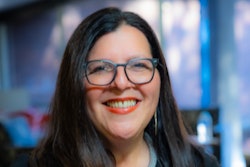Black Lawmakers Urged to Join Earmark Feast
Despite presidential veto, earmarks are likely to stay and be accessible
to minority-serving institutions under Democratic-controlled Congress.
By Charles Dervarics
After a short break, the U.S. Congress again wants to earmark some of its education funds to members’ pet projects, a commitment to pork-barrel spending that has led to a presidential veto as well as calls for more equitable treatment for minority-serving institutions.
Called earmarks, these special funding requests are tucked into annual spending bills at lawmakers’ request. Universities successful in this endeavor generally get around the peer review process required to seek funding under federal grant programs.
“They’re creeping back, and that’s an inevitable fact of life,” said Barmak Nassirian, associate executive director of external relations at the American Association of Collegiate Registrars and Admissions Officers.
Congress took a break from the process when Democrats vowed to cut back on the practice after taking control of the House and Senate. But some projects reappeared in the 2008 education and health spending bill, and President Bush cited the practice as one reason he vetoed the measure last month. The House and Senate could not override the veto, and the spending bill is still languishing in Congress.
But since most earmarks appear to go to large, traditionally White institutions, one expert says Black and other lawmakers should seek a greater share of the pie.
“I don’t know why Black legislators haven’t done it more often,” said Dr. Ronald Walters, a political scientist and director of the African American Leadership Center at the University of Maryland.
According to Walters, Republicans “broke the bank” on earmarks when they controlled Congress from 1994 to 2006. But Democratic control of Congress — and, as a result, increased power for minority lawmakers — should give MSIs more leverage than before to seek their share of projects.
Black lawmakers, for example, control 17 congressional subcommittees, giving them more power than ever, Walters told Diverse. “They are in a position to do a lot of things they weren’t able to do previously,” he said.
Walters noted that in education, earmarks often go to large public universities and private colleges with their own cadre of lobbyists. “We don’t see anywhere near the degree of earmarks for HBCUs that we see for others,” he added.
The bill vetoed by President Bush did contain several projects for HBCUs under the Fund for Improvement of Postsecondary Education, a popular budget line item for education earmarks. Projects at HBCUs would support everything from recruitment of nursing assistants to creation of an osteopathic medical school to improvements in campus-wide technology upgrades.
Overall, there were 2,243 earmarks worth $1 billion in the 2008 education and health spending bill, says Citizens Against Government Waste (CAGW), a watchdog agency that monitors the issue.
But the number of projects and their total costs are down from fiscal 2005, the last year Congress made such earmarks, the group says. The 2008 bill reflected a 41 percent decrease in dollars and a 27 percent decrease in projects compared with fiscal 2005.
Many education observers agreed that enthusiasm for earmarks has dampened somewhat. “There’s no question that earmarks got out of hand under the last phases of Republican control [of Congress],” Nassirian said. “It created a political free-for-all for activities that should stand on their merit.”
But many affluent colleges have Washington, D.C., lobbyists, says Walters, and these institutions “are able to go back year after year after year.” By comparison, many MSIs depend on generalized lobbying efforts through associations, making it harder to obtain these projects, he said.
Among individual lawmakers, some have used their influence to steer funds toward minority-serving institutions or other colleges, based on data from CAGW. In its analysis of the 2008 education spending bill, for example, it cited efforts by Rep. Jim Clyburn, D-S.C., for a $135,000 project at historically Black Voorhees College in South Carolina to study how to reduce diabetes in minority communities.
Elsewhere, Sen. Charles Schumer, D-N.Y., was a significant sponsor of earmarks for minority-related projects in New York state. Proposed projects included $350,000 for a minority teacher preparation initiative at Marymount Manhattan College and $320,000 for a minority health institute at Nassau University Medical Center.
While it’s not clear yet how many education earmarks will make it into a final 2008 education spending bill, Walters says there is ample evidence that interest has returned.
© Copyright 2005 by DiverseEducation.com















